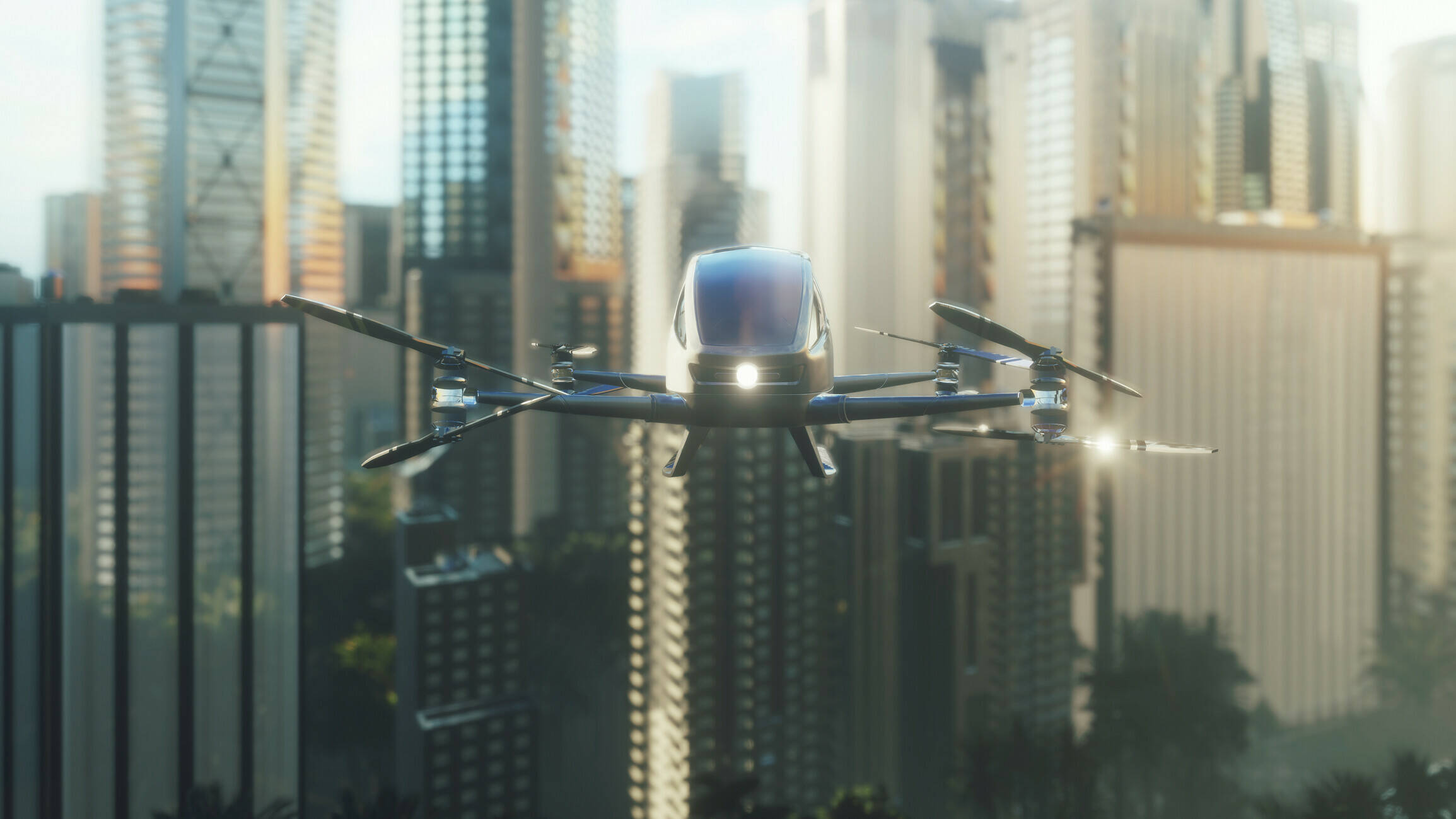



Unlocking the potential of air travel
As civil ATM and AAM grow side by side, harmonising these critical areas into a win-win relationship will realise the vision of integrated air travel.
The culminating plenary session of the NASA event focused on this ambition. Participants agreed on the necessity of establishing a robust architecture for digital exchanges and communications, and also highlighted bandwidth requirements to facilitate adequate data transfer capabilities.
“In the quest for a unified vision for the future, the event’s final session emphasised the need for regulatory clarity, a roadmap for integration, and robust digital infrastructure,” says Eduardo Garcia, CANSO’s Senior Manager, Future Skies.
Also considered were research roadmaps and timelines, focusing on key areas such as vehicle-to-vehicle communications, wake susceptibility impacts, cooperative surveillance, and the role of artificial intelligence in optimising trajectories.
“Overall, the session highlighted the importance of driving innovation and collaboration to realise the vision of integrated traffic management, ensuring a harmonised and efficient future for both ATM and AAM,” says Garcia.
He adds that the overall event left participants in no doubt that collaboration and innovation were the foundation of airspace management transformation and the integration of new users.
Future air mobility
Advanced air mobility, meanwhile, signifies a new era in air travel and could have an enormous impact on society – not only in the transportation sector but also in such services as medical aid.
But the sector is still in its infancy and requires a multitude of enablers to reach maturity.
On the regulatory side, dedicated operational rules and licensing are essential if vertical take-off and landing (VTOL) vehicles are to fly in a congested, urban airspace, whether carrying goods or passengers. Strict separation minima and contingency procedures must address varying operational scenarios.
In terms of infrastructure, vertiports – an airport for VTOLs – will soon become a recognised feature of urban landscapes. The location of these facilities will be vital for VTOL success and could be constructed within an airport’s existing footprint or nearby.
As for technology and procedural requirements, automation is high on the agenda. Autonomous systems are essential to manage flight operations in busy environments and reduce the reliance on manual intervention. Ultimately, trajectory prediction and management are likely to be so complex that automation is the only viable solution. An associated development is Detect and Avoid (DAA) systems, which will certainly be integral to beyond visual line of sight (BVLOS) operations. CNS advances will likewise be a critical enabler for AAM growth.
Advances in ATM
Air traffic management is rapidly evolving with a host of new technologies and procedures designed specifically to allow civil aircraft to maximise their performance amid rising demand. Trajectory-Based Operations (TBO) is the obvious example and represents a step change in airspace management through optimised operations.
But projects cover all aspects of ATM. Small ticket items are combined with larger initiatives to drive progress. In the former category are such items as developing a common altitude reference system to moving from magnetic north to true north. In the latter category, traditional airspace is morphing into a more flexible structure enhancing safety and efficiency while allowing for new entrants.
Sharing data in real time is critical across the board. Such initiatives as System Wide Information Management (SWIM) will improve decision making for all parties, especially in changing conditions. Communication, Navigation, and Surveillance (CNS) upgrades will go hand-in-hand with real-time data exchange and add another layer to safe and efficient airspace operations. Safety will also benefit from enhanced safety management systems that monitor, assess, and mitigate risks, even as airspace grows increasingly complex.
Automation and regulation will also need to be considered as ATM flies to the future. Innovation is happening at speed and regulators need to be equally quick with supportive standards and rules.
The event featured some one hundred representatives from manufacturers, airlines, air traffic management (ATM), commercial space providers, and uncrewed aircraft operators. Universities and other research institutions were also represented as were the Single European Sky ATM Research (SESAR) 3 Joint Undertaking and the International Forum for Aviation Research (IFAR). Many of the participants are also members of the Complete Air Traffic System (CATS) Global Council.
Michelle Bishop, CANSO Director Programmes, says it was important to bring together members of the CATS Global Council with other industry and thought leaders from the aviation world, and especially those researchers and innovators from Silicon Valley.
“We want to align our two worlds and co-create a future together,” she explains. “One that’s rooted in today’s world, but very much informed by the future. Coming together enables us to collectively define a shared concept and vision, identify essential capabilities, develop a research roadmap, establish a functional architecture, foster collaboration and reach consensus on immediate next steps, and propel the industry toward a harmonised and innovative future.”
A recent event in California organised by NASA, the Federal Aviation Administration (FAA) and CANSO and hosted by NASA AMES highlighted the need to harmonise developments in airspace management and advanced air mobility (AAM).






As civil ATM and AAM grow side by side, harmonising these critical areas into a win-win relationship will realise the vision of integrated air travel.
The culminating plenary session of the NASA event focused on this ambition. Participants agreed on the necessity of establishing a robust architecture for digital exchanges and communications, and also highlighted bandwidth requirements to facilitate adequate data transfer capabilities.
“In the quest for a unified vision for the future, the event’s final session emphasised the need for regulatory clarity, a roadmap for integration, and robust digital infrastructure,” says Eduardo Garcia, CANSO’s Senior Manager, Future Skies.
Also considered were research roadmaps and timelines, focusing on key areas such as vehicle-to-vehicle communications, wake susceptibility impacts, cooperative surveillance, and the role of artificial intelligence in optimising trajectories.
“Overall, the session highlighted the importance of driving innovation and collaboration to realise the vision of integrated traffic management, ensuring a harmonised and efficient future for both ATM and AAM,” says Garcia.
He adds that the overall event left participants in no doubt that collaboration and innovation were the foundation of airspace management transformation and the integration of new users.
Unlocking the potential of air travel
Advanced air mobility, meanwhile, signifies a new era in air travel and could have an enormous impact on society – not only in the transportation sector but also in such services as medical aid.
But the sector is still in its infancy and requires a multitude of enablers to reach maturity.
On the regulatory side, dedicated operational rules and licensing are essential if vertical take-off and landing (VTOL) vehicles are to fly in a congested, urban airspace, whether carrying goods or passengers. Strict separation minima and contingency procedures must address varying operational scenarios.
In terms of infrastructure, vertiports – an airport for VTOLs – will soon become a recognised feature of urban landscapes. The location of these facilities will be vital for VTOL success and could be constructed within an airport’s existing footprint or nearby.
As for technology and procedural requirements, automation is high on the agenda. Autonomous systems are essential to manage flight operations in busy environments and reduce the reliance on manual intervention. Ultimately, trajectory prediction and management are likely to be so complex that automation is the only viable solution. An associated development is Detect and Avoid (DAA) systems, which will certainly be integral to beyond visual line of sight (BVLOS) operations. CNS advances will likewise be a critical enabler for AAM growth.
Future air mobility
Air traffic management is rapidly evolving with a host of new technologies and procedures designed specifically to allow civil aircraft to maximise their performance amid rising demand. Trajectory-Based Operations (TBO) is the obvious example and represents a step change in airspace management through optimised operations.
But projects cover all aspects of ATM. Small ticket items are combined with larger initiatives to drive progress. In the former category are such items as developing a common altitude reference system to moving from magnetic north to true north. In the latter category, traditional airspace is morphing into a more flexible structure enhancing safety and efficiency while allowing for new entrants.
Sharing data in real time is critical across the board. Such initiatives as System Wide Information Management (SWIM) will improve decision making for all parties, especially in changing conditions. Communication, Navigation, and Surveillance (CNS) upgrades will go hand-in-hand with real-time data exchange and add another layer to safe and efficient airspace operations. Safety will also benefit from enhanced safety management systems that monitor, assess, and mitigate risks, even as airspace grows increasingly complex.
Automation and regulation will also need to be considered as ATM flies to the future. Innovation is happening at speed and regulators need to be equally quick with supportive standards and rules.
Advances in ATM
The event featured some one hundred representatives from manufacturers, airlines, air traffic management (ATM), commercial space providers, and uncrewed aircraft operators. Universities and other research institutions were also represented as were the Single European Sky ATM Research (SESAR) 3 Joint Undertaking and the International Forum for Aviation Research (IFAR). Many of the participants are also members of the Complete Air Traffic System (CATS) Global Council.
Michelle Bishop, CANSO Director Programmes, says it was important to bring together members of the CATS Global Council with other industry and thought leaders from the aviation world, and especially those researchers and innovators from Silicon Valley.
“We want to align our two worlds and co-create a future together,” she explains. “One that’s rooted in today’s world, but very much informed by the future. Coming together enables us to collectively define a shared concept and vision, identify essential capabilities, develop a research roadmap, establish a functional architecture, foster collaboration and reach consensus on immediate next steps, and propel the industry toward a harmonised and innovative future.”
A recent event in California organised by NASA, the Federal Aviation Administration (FAA) and CANSO and hosted by NASA AMES highlighted the need to harmonise developments in airspace management and advanced air mobility (AAM).

